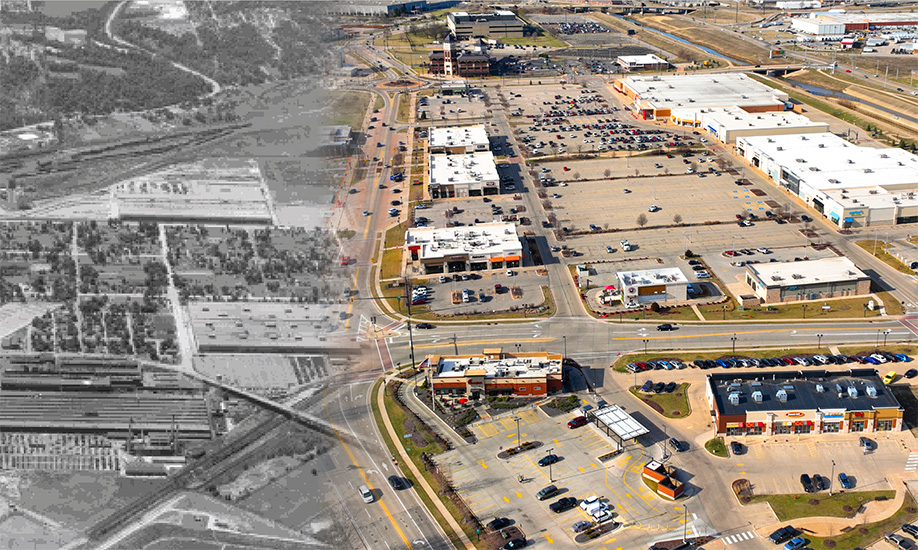From the Festival of Lights to the Levee District, East Peoria has reinvented itself to be a major regional player
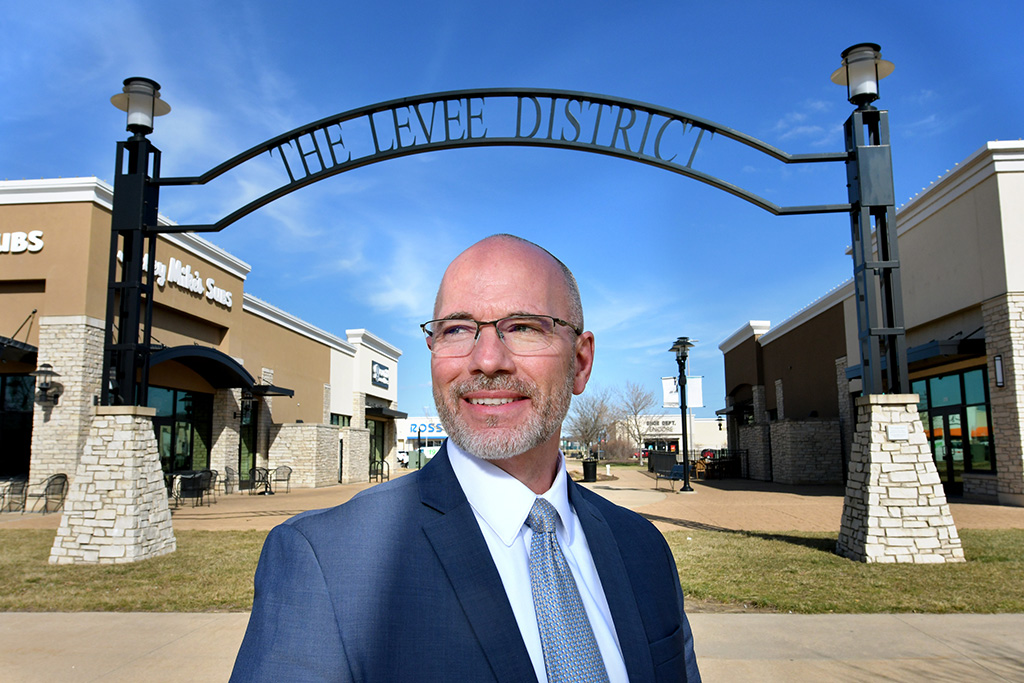
Standing at the roundabout in East Peoria’s Levee District, one would never imagine that the surrounding neighborhood was ever anything but a bustling commercial center. Central Illinoisans of a certain seniority know otherwise. This is the sacred ground where Holt Manufacturing Company — a predecessor of Caterpillar Inc. — put down roots and put East Peoria on the map.
Today, the Levee District is Exhibit A in an ongoing tale of transformation that has enveloped East Peoria for more than a century. From two swampy, flood-prone burgs known as Bluetown and Coleville, to industrial powerhouse, to destination city for diners, shoppers, athletes and hopeful gamblers, East Peoria has repeatedly reinvented itself.
Making Things Happen
“Instead of sitting back and waiting for things to happen, East Peoria has always tried to move things forward,” Mayor John Kahl said recently at his office in the Levee District. “Our city leaders have gone out and sought ways to revitalize the city.”
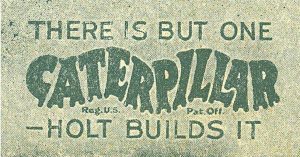 That was as true in the early 1900s as it is now. The entire region changed when local implement dealer Murray Baker convinced Pliny Holt, nephew of California-based Holt Manufacturing founder Benjamin Holt, that the factory of a bankrupt tractor maker in East Peoria was the perfect spot for a new business venture. The company that became Caterpillar began building tractors there in 1910.
That was as true in the early 1900s as it is now. The entire region changed when local implement dealer Murray Baker convinced Pliny Holt, nephew of California-based Holt Manufacturing founder Benjamin Holt, that the factory of a bankrupt tractor maker in East Peoria was the perfect spot for a new business venture. The company that became Caterpillar began building tractors there in 1910.
Flood waters nearly carried the town downstream in 1927, continued to prove troublesome in the 1930s, and threatened Caterpillar’s wartime production in the 1940s. A system of dams, levees, channels and bridges then reshaped the soggy landscape and helped spur growth on (mostly) dry ground.
When the cement for Interstate 74 was poured up the eastern bluff in the 1950s, bridges were built, streets rerouted and a wave of industrial development changed the face of the river valley again.
“Visionary Leadership”
Kahl credits the community’s “visionary leadership” in the 1980s with taking the first steps toward shaping the East Peoria we know today. It got going with the Town Centre I and II renewal projects at the “four corners” intersection of Washington and Main Streets, the former hub of commerce.
“That was the beginning of a long-term vision to transform all of this,” Kahl said, referring to the former Caterpillar factories and offices. “Jim Ranney, the mayor at that time, knew that manufacturing wasn’t going to last forever.”
For the next 40 years, East Peoria government and business leaders aggressively used the economic development tools at their disposal, relentlessly plowing ahead with a mantra of “out with the old, in with the new.”
An industrial junkyard on the riverfront north of I-74 became the foundation for EastPort Marina, “the best public marina outside of Chicago,” according to Jeff Giebelhausen, the former mayor who oversaw its development. Near the marina, HarborPointe offered some of the first high-end townhomes on either side of the river.
A former gravel pit on the bluff off U.S. Route 150 on the community’s eastern flank became EastSide Center, a regional sports mecca that attracts thousands of athletes and fans from all over the state, said Rick Swan, executive director of the East Peoria Chamber of Commerce. On summer weekends, “you may be hard-pressed to find a hotel room from here to Bloomington” thanks to the tournament crowds, said Swan.
The demise of the Wallace Station power generating plant on the edge of the Illinois River, once famed for its 37-foot illuminated Reddy Kilowatt sign, made room for Walmart, Lowe’s, Riverfront Park and dozens of other restaurants and businesses. The 150,000-square-foot Bass Pro store just north of I-74 sits on the plant’s former ash pond.
“The city has turned over and become wholly new, rejuvenated, redeveloped and remodeled,” said former City Attorney Dennis Triggs, who was an enduring and influential presence on that journey, through multiple mayoral administrations. “Somewhere along the line, I think the city also recaptured some pride and the spirit of the people who live here was reinvigorated.”
He ties that community pride to one event.
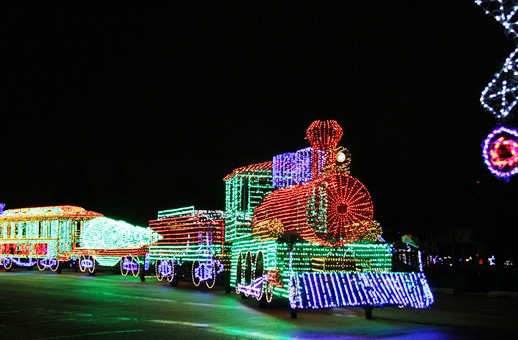
Let There Be Light
“I don’t think there was any occurrence that would approximate the impact of the Festival of Lights,” said Triggs. “It has been an enormously successful community undertaking.”
Coming up on its 39th year, the annual Folepi’s Winter Wonderland display at Veteran’s Park at the top of the Springfield Road hill averages 25,000 vehicles per year, while the Parade of Lights brings thousands of people, literally by the busload. The festival garnered national attention in 2020 when it won the Great Christmas Light Fight on ABC TV.
After nearly 30 years, the Par-A-Dice Hotel Casino also has become synonymous with East Peoria. The casino has pumped more than $100 million in gaming tax revenue into East Peoria coffers since the early 1990s. Though the pre-COVID take of $2.2 million was significantly lower than the 2003 high of $4.5 million, gaming — along with hospitality and sales tax — continues to be a vital revenue source.
“(Gaming revenue) has made it easier to make some tough decisions over the years because there was a revenue steam to help if you needed it for a particular project,” Triggs said.
Giebelhausen agreed. “(The Par-A-Dice) has caused a lot of things to happen in the city that would not have otherwise been achieved.”
Meanwhile, East Peoria’s annual sales tax revenues, adjusted for inflation, have more than tripled over the last 40 years.
More to Come
People may soon be living in the Levee District.
City officials said developers expect to break ground this spring on 501 Blutowne, a 226-unit residential development west of the Fondulac District Library/City Hall complex. The $55 million plan from Flaherty and Collins Properties in Indianapolis features a parking deck, swimming pool and 10,000 square feet of commercial space.
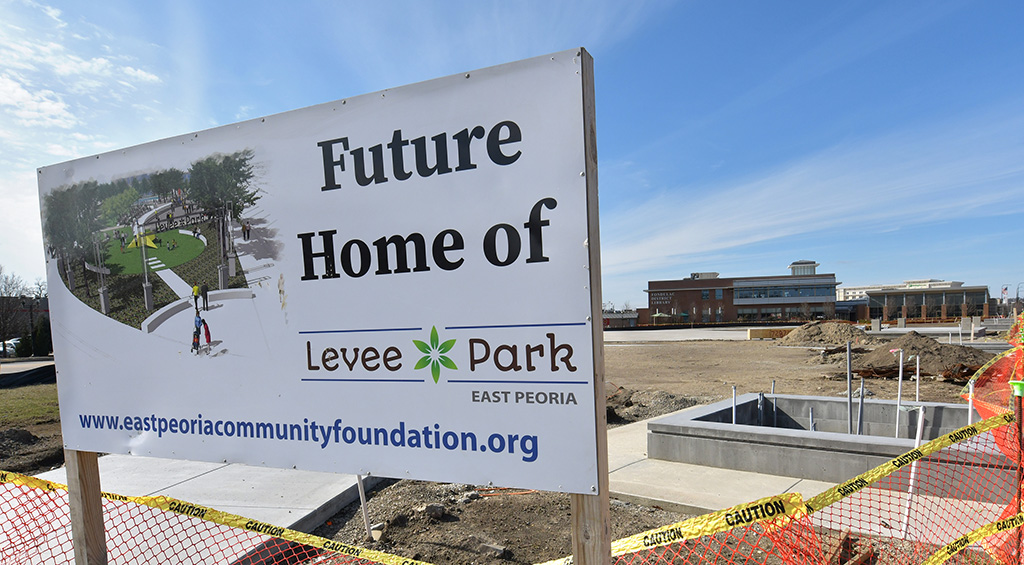
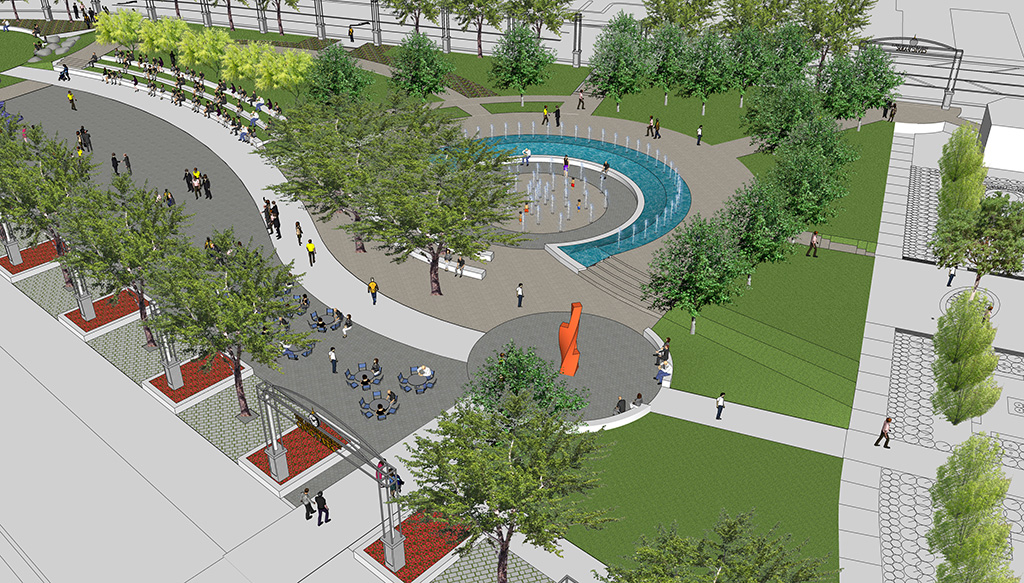
‘One of my goals has been to focus on the residential element’ — Mayor John Kahl
Riverview Lofts, a 142-unit residential development, is being planned by the Peoria-based Teekona Group, to be located on the riverfront near the Michel Bridge and Embassy Suites.
“One of my goals has been to focus on the residential element,” said Kahl. “That’s the one part of that early vision that hasn’t been achieved yet.
“It should bring some life down here. When we get people living here it will be even more vibrant and lively.”
On the other side of City Hall, the East Peoria Community Foundation is in the second phase of developing Levee Park, a $3.3 million privately funded project that will include green space, a water feature, venues for markets and festivals, a terraced seating area and stage. EPCF Board President Susan Portscheller said the park will be “the beautiful, iconic center of our downtown.”
The recently concluded raffle of a Special Edition 2023 Corvette raised $250,000 for the cause. Portscheller expects Phase 3, including a splash pad and water feature, to be complete next year.
Living, Working, Playing
Amid this commercial redevelopment and renewal, East Peoria is home to more than 22,200 people. The topography dictates the pattern of streets and neighborhoods stretching from Washington and Morton to Creve Coeur.
Caterpillar still has a commanding presence, employing thousands on the east bank of the Illinois River. Hundreds more are found at homegrown companies such as Jtec Industries, maker of industrial material handling systems; Sorce Freshwater, purveyor of Asian carp to the world; and Hagerty Steel and Aluminum.
“East Peoria leadership has been very supportive,” said Jon Peterson, who runs Jtec with partner Joe Knepp. “We have worked together well and have been able to grow the company locally.”
The Fondulac Park District manages 1,600 acres of parks, natural areas, two golf courses, a marina and campground, a farm park and a stretch of the recreational trail that connects with Morton to the east and across the river to the Rock Island Trail.
From its home on the bluff between East Peoria and Washington, Illinois Central College has prepared generations of students for rewarding careers and is at the forefront of efforts to train tomorrow’s tech-oriented workforce. The local branch of Midwest Technical Institute also offers nationally accredited vocational programs.
Meanwhile, a block of the “old downtown” still stands along Washington Street between Main and Anna, a reminder of how different this city once was. Bookended by the bright yellow mural enrobing Beck’s Florists and a craft and gift consignment shop called Craftology, these buildings are an increasingly rare glimpse of East Peoria’s past.
“This is what I remember growing up,” said Sally Taylor, proprietor of Craftology. “Everyone is concentrating on the Levee District but I like the old buildings. This is what I remember as downtown.”
All in all, it has been nothing short of a metamorphosis.
Said Mayor Kahl: “I look at what we have done here and I see it as a win for the region as well as a win for East Peoria.”



